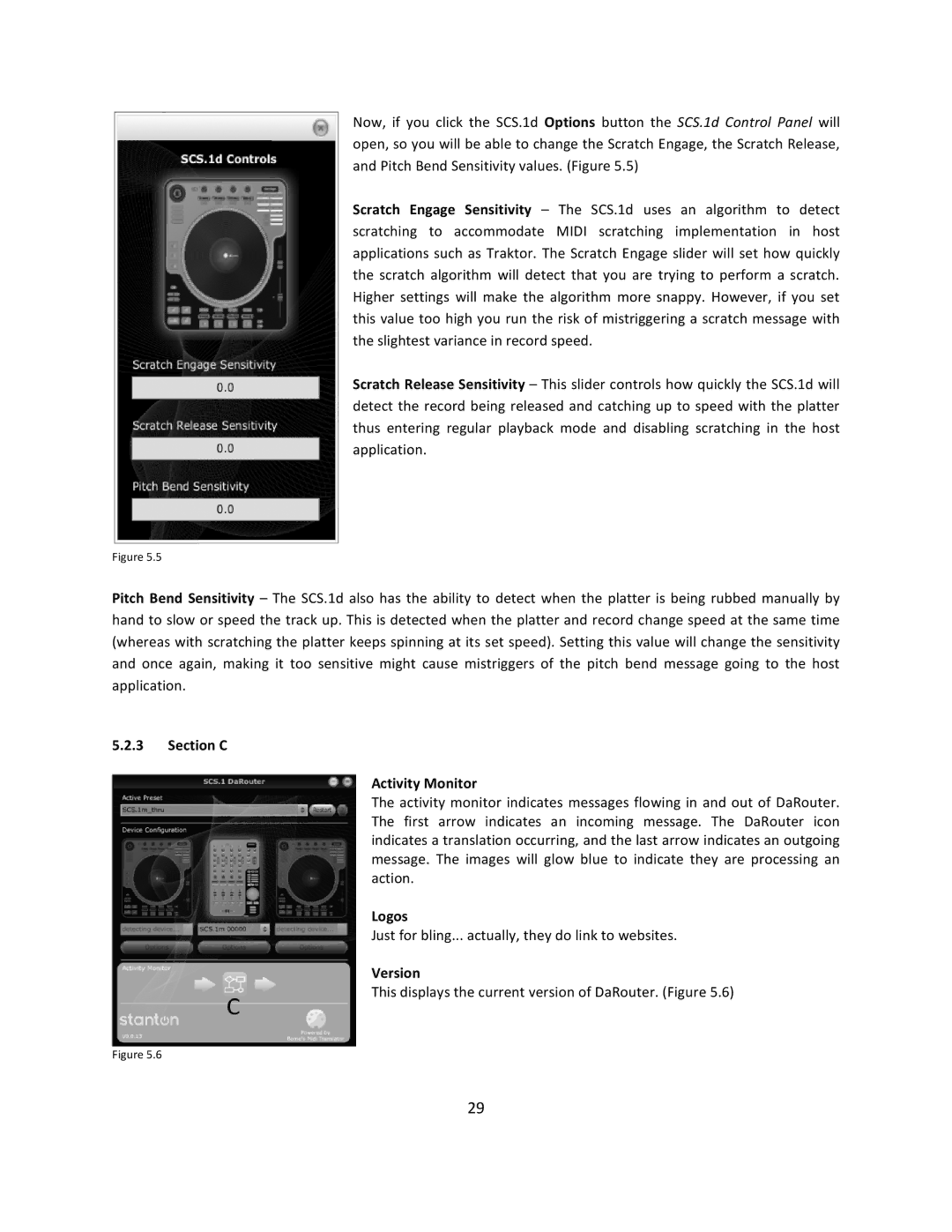
Now, if you click the SCS.1d Options button the SCS.1d Control Panel will open, so you will be able to change the Scratch Engage, the Scratch Release, and Pitch Bend Sensitivity values. (Figure 5.5)
Scratch Engage Sensitivity – The SCS.1d uses an algorithm to detect scratching to accommodate MIDI scratching implementation in host applications such as Traktor. The Scratch Engage slider will set how quickly the scratch algorithm will detect that you are trying to perform a scratch. Higher settings will make the algorithm more snappy. However, if you set this value too high you run the risk of mistriggering a scratch message with the slightest variance in record speed.
Scratch Release Sensitivity – This slider controls how quickly the SCS.1d will detect the record being released and catching up to speed with the platter thus entering regular playback mode and disabling scratching in the host application.
Figure 5.5
Pitch Bend Sensitivity – The SCS.1d also has the ability to detect when the platter is being rubbed manually by hand to slow or speed the track up. This is detected when the platter and record change speed at the same time (whereas with scratching the platter keeps spinning at its set speed). Setting this value will change the sensitivity and once again, making it too sensitive might cause mistriggers of the pitch bend message going to the host application.
5.2.3Section C
Activity Monitor
The activity monitor indicates messages flowing in and out of DaRouter. The first arrow indicates an incoming message. The DaRouter icon indicates a translation occurring, and the last arrow indicates an outgoing message. The images will glow blue to indicate they are processing an action.
Logos
Just for bling... actually, they do link to websites.
Version
This displays the current version of DaRouter. (Figure 5.6)
Figure 5.6
29
